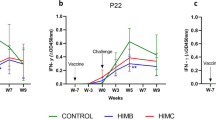Abstract
MUCH interest has been aroused by the recent release of information about the new vaccine for the protection of man against mite-typhus (scrub-typhus). Mite-typhus has been-and still is-one of the major health risks in the Far East. The name scrub-typhus, which is commonly given to this disease, is somewhat misleading. It was adopted because the disease is prevalent in areas covered with scrub vegetation, which provides a favourable habitat for the larval mite carrying the disease ; but experience during the War showed that the disease is just as prevalent, if not more so, in damp areas covered with the very tall tropical kunai grass (see J. B. Logue, U.S. Naval Med. Bull., 43, 645 ; 1944), which may grow to a height of 10-20 ft., and also in areas where coco-nut palms and other vegetation occur. Damp and swampy country favours the disease. It is found in Japanese river valleys near the sea and for this reason has been called 'Japanese river fever'.
This is a preview of subscription content, access via your institution
Access options
Subscribe to this journal
Receive 51 print issues and online access
$199.00 per year
only $3.90 per issue
Buy this article
- Purchase on Springer Link
- Instant access to full article PDF
Prices may be subject to local taxes which are calculated during checkout
Similar content being viewed by others
Rights and permissions
About this article
Cite this article
LAPAGE, G. MITE-TYPHUS AND THE NEW MITE-TYPHUS VACCINE. Nature 157, 236–238 (1946). https://doi.org/10.1038/157236a0
Issue Date:
DOI: https://doi.org/10.1038/157236a0
Comments
By submitting a comment you agree to abide by our Terms and Community Guidelines. If you find something abusive or that does not comply with our terms or guidelines please flag it as inappropriate.



